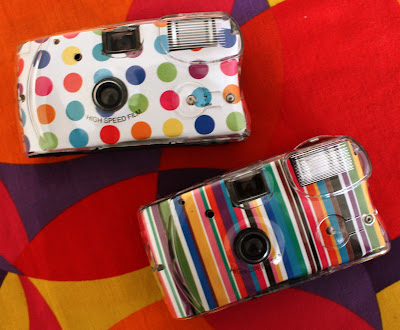On Monday, Matt Writtle, a professional photographer came to Lichfield Campus to talk to us about the current exhibition in the Wedge Gallery 'Portraits for Posterity' and his other works. Matt has worked for many national newspapers including The Times, London Evening Standard, Daily Telegraph, and Financial Times, along with a number of commercial, charitable and PR clients.
Portraits
Matt has photographed many stars including: Jamie Oliver, Usher, Pete Best and Johnny Rotten. He explained that most of the time, he does not have much time to photograph the celebrities, having on average around 15 minutes. In this time, he has to assess the light in the room of the shoot, set up his equipment and take the images. Now, he has an assistant that can help him with these things, making more time to shoot. He said that he found it much easier to shoot celebrities as they've been in that situation many times before and know the score, so no time has to be wasted by directing the celebrities into each pose; they know what to do. In most cases, he has to shoot both portrait and landscape, mainly for editorials in papers and magazines, because they may be unsure of the placement of the image on the page. With portraits, or any of his work, there is no distinct style. As all of his work is commissioned, so he is required to take the image that is requested. In many cases, Matt and the commissioner may differ in opinion as to which image should be used, but he explained that take one image for the commissioner and one for yourself, one that your completely happy with and let the commissioner have the image he wants.
Documentary
As he works for newspapers, Matt has been required to travel the world to report events such as the tsunami, orphan HIV babies and child prisoners. The purpose of these images is to create an unbiased observation of the event. This is done by having no post editing to the image. Unlike the celebrity portraits, these images have many props and are on location, giving the image a context and narrative, which gives a visual representative of the article it is taken for. These images are digital-based, as they are often needed very quick after they've been taken for print. If these images were taken on film, it would take longer for them to be processed and selected for print.
Portraits for Posterity
The exhibition Portraits for Posterity, currently at the Wedge Gallery in Lichfield, is a collection of portraits taken by Matt of the survivors of the Holocaust that live in the UK. There were very few survivors of the Holocaust, as 6 million Jews and other inferior groups were killed in the camps and ghettos. These images provide a permanent memorial to those who survived and were lost in the Holocaust.
These images were taken on film, as it is the media that Matt started his career with and shows every little wrinkle, reflecting their experiences in the camps. The set up was one lamp from behind Matt onto the figure, with a reflector by their chest as well as a prism of reflectors that Matt took the photographs through. The prism prevented the survivors from seeing Matt, which helped him take better images as they couldn't react to him. As they were nervous and didn't really know what to do, Matt would wait a while, sometimes over a minute, until they had relaxed and he could take a more natural image. He gave them very little direction, making them even more natural. Even though each survivor had their own individual story, he purposely didn't research them prior to the photo shoot as his feelings towards their experience may have influenced how the viewer portrays the image. Initially, his idea was to photograph each survivor in an environment where they would have worked, but decided to simplify them to a plain black backdrop, because their faces depicted their experience. It wasn't until he saw them all together in an exhibition space that he realised why he did this; the black background represented the Holocaust.
I really enjoyed talking to Matt about his work and his experience and have taken a lot from it. I asked him how he launched his career as a professional photographer and how he got himself recognised and he said that he did so through who he knew. He advised us that we network with as many people in the industry as possible, so we are more likely to get recognised. He also explained that when we started out, he would go on work experience with newspapers every holiday he had, gaining knowledge that is still useful to him today. He also said that it is very important to surround yourself with images, enabling you to get inspiration and know what is currently out there.
I have already taken on board his advice and have started to network by joining many online forums for photographers as well as models and make up artists and have started to contact them to organise photo shoots, in order to build up my portfolio. I have also made a professional looking website with my best work on it, and hopefully with have new images to put up soon. I am also looking into work experience with studio photographers.











































